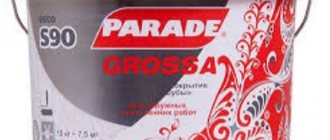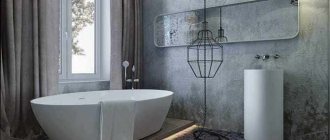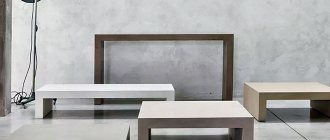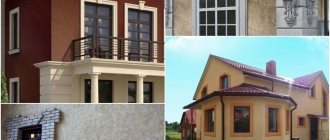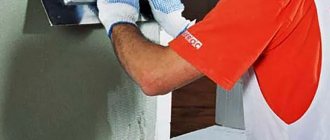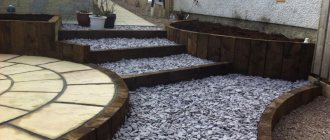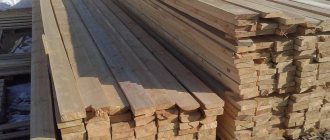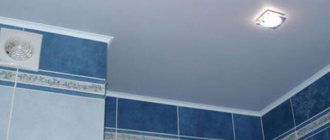Decorating a house with decorative plaster is becoming increasingly popular. Decorative plaster of walls is done not only in private houses, but also in apartments. In this regard, many are interested in what kind of material this is and what it is intended for.
What is decorative plaster? This is a special, plastic mixture, often with the addition of various kinds of stones, mica, etc. It is intended for decorating and finishing walls, less often ceilings. How is it different from ordinary plaster? Let's read its composition.
Composition of decorative plaster
Decorative plaster is made from:
- Lime, cement, gypsum, acrylic, silicate and others - as a binding component. They ensure that the plaster adheres to the surface. Gypsum is used very rarely due to the fact that such a mixture will harden quickly. And there will be difficulties with applying a drawing or pattern.
- Fillers - most types of decorative plaster contain fillers, such as sand, mica, marble chips, pebbles, etc. They serve to give the plaster that same decorative effect.
- Additives - these can be agents that prevent the formation of foam, plasticizers, etc.
- Water is, finally, the solvent for this whole mixture.
Simply put, decorative plaster differs from ordinary plaster only in the filler. But it is these components that make it unique. What distinguishes decorative plaster from traditional types of finishing materials, such as wallpaper.
Wallpaper or decorative plaster
If you are faced with a difficult choice of material for wall decoration, choosing between decorative plaster and wallpaper that imitates it, we suggest you compare them to make the right decision.
Firstly, the price of the material. The simplest wallpaper for decorative plaster is cheaper than the plaster itself. However, not all so simple. If we add up the preparatory work for wallpapering, puttying, stripping, glue, etc., then the benefit will not be so striking. The only exception is Venetian decorative plaster. Here, “Venetian” wallpaper will cost much less than the original.
Secondly, the service life. Decorative plaster has a clear advantage here. It will serve you for at least 30 years. And some of its species are up to 50-60 years old. Wallpaper will have to be changed after a maximum of 15 years. And in most cases, within 5-10 years. By the way, do the math and include changing the wallpaper in the paragraph above about comparing prices for materials.
Thirdly, maintenance of the finish. Decorative plaster is easy to wash and clean. Not all types of wallpaper can boast of this.
Fourthly, this is the uniqueness of the resulting decorative plaster pattern. Wallpaper has a finite number of types of patterns.
We could go on and on about the advantages and disadvantages of both decorative plaster and wallpaper for decorative plaster, but the conclusions are already clear. If you want simplicity and cheapness, wallpaper is your choice. If you have the opportunity to spend money, if you want uniqueness in decor and durability, finish it with decorative plaster.
Patient No. 3 - I wonder what these walls are smeared with?
What's wrong
- №1 -What is the wall smeared with? Only the most uncultured and indecent guesses.
- №2 — the FLOOR near the wall is heavily plastered, all this stuff will have to be broken out with crowbars after drying, and this can damage the screed. In addition, there are a decent number of defects and bumps on the wall.
How to fix
First you need to figure out what is smeared on it; perhaps you shouldn’t touch this wall with your hands at all. If there is no humor, then sand off those places where there are tubercles. If the sandpaper does not cope, then use a special plane. After cleaning the wall, thoroughly putty the surface. If the screed has already been made, then request compensation for damage to the screed. If not done, then remove the “hills” from the plaster on the floor near the wall.
What if you don't fix it?
Then the wall will remain covered in a strange substance and growths. This will not allow you to properly putty the wall, and subsequently prime and paste the wallpaper. Stitch and compare. So that it is smooth.
Types of decorative plaster
All decorative plaster is divided into two large groups.
Types of decorative plaster.
- decorative plaster for interior work
- decorative plaster for exterior use
These two types of plasters differ in that external decorative plaster is more resistant to ultraviolet radiation, i.e. fades less in the sun. And facade decorative plaster tolerates “wet” weather conditions much better. It is resistant to rain, snow, etc.
Due to its properties, decorative plaster for the facade of a house exists in fewer types. Therefore, we will consider options for decorative plaster for interior decoration. Because they also include options for the facade of the house.
Types of interior decorative plasters
1. Relief - so called because the pattern they create turns out to be in relief. Divided into subspecies:
- Structural decorative plaster - the pattern is obtained mainly due to the composition of the decorative plaster. Pebbles, quartz sand and the like in the mixture give the pattern a certain structure when applied. Typical representatives are decorative plasters “Bark beetle”, “Fur coat”, “Lamb”.
- Textured decorative plaster – this type of decorative plaster is distinguished by its fine grain and plasticity. Here the pattern is obtained through a special technique of applying plaster. To do this, they use both improvised means - brushes, film, sponges, etc., and industrial special products - rollers with a specific stencil design.
2. Smooth - accordingly, the pattern turns out smooth. A representative is “Venetian” decorative plaster imitating marble or onyx finishing.
Decorative plaster for interior wall decoration and facade decoration also differs in its composition. Depending on the main connecting element, decorative plasters are divided into the following types:
- Acrylic decorative plaster – contains acrylic resins. It has good protection against water and moisture, but has poor breathability. Weak abrasion resistance compared to other types of decorative plaster. Low fire safety.
- Mineral decorative plaster - consists mainly of cement, lime and gypsum. Good, natural plaster, suitable for finishing rooms with normal humidity. On the facade, in the bathroom and kitchen, it requires additional protection in the form of painting, varnishing, etc. Good air permeability makes the indoor microclimate healthy and pleasant.
- Silicone decorative plaster is a universal mixture for any premises and building facade. Good vapor permeability, moisture resistance and abrasion resistance make this type of decorative plaster suitable for any finishing work.
- Silicate decorative plaster is another universal mixture for decorating indoors and outdoors. Not afraid of water, sunlight, antistatic. But application requires skill, as the plaster hardens quickly.
We hope you understand the types and types of decorative plaster. Let's look at a photo of decorative plaster in the interior.
Decorative plaster in the interior
Using different types of decorative plaster and methods of applying it, you can achieve very different design effects. Here everyone will find the pattern that they like. However, keep in mind: often the samples of decorative plaster in the store and what you end up with on the wall may not match. After all, each application of decorative material is different from the previous one. But despite this, the resulting effects can be generalized.
Effects of decorative plaster
- Venetian plaster. It looks like a polished stone or marble surface. Apply on any surface prepared for its application.
For more information about Venetian plaster, read our special topic “Venetian plaster: what is it, how to apply, photos”
- Travertine effect. A complete imitation of stone called travertine. The porous surface and light pale color make it an excellent room decoration.
- Concrete effect. With the help of this type of plaster, an absolute imitation and creation of the effect of a concrete wall occurs.
- Skin effect. For lovers of discreet luxury, this look is ideal. Thanks to its texture, it conveys well and creates the effect of a wall covered in leather. At the same time, thanks to the variety of tools, with the help of decorative plaster in the interior of the room it is possible to create an imitation of different types of leather.
- Wood effect. Incredibly accurately imitates the appearance of wood covering, thanks to the accuracy of the reproduction of small details and patterns of the plant.
- Silk effect. To create it, a mother-of-pearl coating is used, which, smoothly shimmering, creates the feeling that the wall is covered with silk.
- Brickwork effect. It is popular due to its low cost compared to real brick and its accurate imitation of the presence of brick in the interior.
- The "bark beetle" effect. Using this technique, you can get a pattern that imitates the effect of a surface damaged by a bark beetle.
- Orange peel effect. It will be an ideal option for painting under oriental design.
- Wave effect. Imitates the look of a sea wave. With the right choice of paint, it looks very beautiful on the surface.
- "Flowers" effect. Decorative plaster “flowers” is used in frequent cases and stands out among the general variety of styles of decorative plaster. When creating a pattern, the shape and appearance of the flower depends solely on the spatula used and its movements. In this case, there is no connection to color and shape. You can decorate and paint the finished wall either in one color or using different techniques.
Types of finishing with decorative plaster are very diverse. Some use ready-made, template forms, while others can create their own art and create patterns that are pleasing to their soul.
The use of decorative plaster in the interior of rooms
Decorative plaster in an apartment performs one of the main functions of room decoration. A correctly selected design of decorative plaster will make the interior even more beautiful and perfectly complement the style taken as a basis. Also, each room of the apartment requires an individual approach due to the peculiarities of its location and external characteristics.
- Decorative plaster in the kitchen.
Using this type of finishing material in the kitchen would be an excellent choice, as it is easy to clean and looks quite decent on the wall surface. Types of plaster used for decoration: Venetian, with imitation of marble or stone surface; imitation silk, plaster with small or large crumbs, etc.
The main thing that is worth emphasizing is that decorative plaster should be applied only to one wall of the room, so as not to make the kitchen too “heavy” and not spoil the design of the room.
- Decorative plaster in the bathroom.
Due to the characteristics of this room, it is recommended to use cement-based plaster or sanitizing plaster, which perfectly tolerates the general humidity of the room and is environmentally friendly.
Often, when finishing with decorative plaster, Venetian plaster or various textured types that are easy to clean are used for the bathroom.
- Decorative plaster in the corridor.
Decorative plaster in the hallway, as well as in the corridor, forms the main impression of the apartment’s design. Speaking about the types of decorative plaster in rooms of this type, we can name the main ones that best meet the requirements (resistance to cold, moisture and good operation): velvet and silk effect, “bark beetle” effect and Venetian plaster.
- Decorative plaster on the balcony.
Finishing the balcony with decorative plaster allows you to maintain the harmony of the design with all rooms of the apartment. Also, it performs an excellent heat-retaining function, is quite easy to operate and maintain, insulates sound and, at the same time, allows the walls to breathe. To decorate walls, various types of plasters are used, from textured plasters, with imitations of various plants and reliefs, to, for example, imitations of stone or brick.
How to find out if a material needs repair work?
By characteristic signs you can determine whether the plaster needs repair. Among them are the following:
- Color change . Faded stains of greasy composition are visible. Rust stains appear, and sometimes soot appears.
- Serifs and protruding fragments appear . The wall does not crumble, but it bulges greatly and its appearance is lost.
- Fragments of plaster begin to peel off from the wall . The walls are crumbling, the floor has to be washed or vacuumed every day.
The appearance of the plastered wall changes greatly; flaws and faded areas become clearly visible. If defects cannot be immediately noticed even visually, then a simple tape measure and a bar with a level can come to the rescue. These tools are used to inspect surfaces. Any deviations in level lead to conclusions about an incorrect or outdated external façade.
If misfires and defects are detected, you should think about whether the surface needs to be radically repaired. Simple calculations will allow you to do without complex manipulations if the defects are minor. For example, if the plaster is peeling off in one place, you can stick embossed wallpaper . This simple solution saves time.
You can level the old layer, but most often you will have to tear off the surface layer and apply a finishing base. You can do this yourself. You just need to select the materials and mix them well together.
DIY decorative plaster
If store-bought decorative plaster options are not suitable for you for some reason, you may be thinking about how to make decorative plaster with your own hands. Well, everyone can do this. In addition, you can save a lot on materials. Let’s make a reservation right away: decorative plaster made independently will not be as high quality and durable as factory-made material. But the service life of such decor of 10-15 years is quite suitable for most people. Especially considering the relative cheapness of such finishing.
So, how to make decorative plaster? It all depends on what kind of room you want to decorate with homemade decorative plaster. Or maybe you want to finish the facade? In these cases, the material used will be different.
Do-it-yourself decorative plaster for interior decoration is made either from gypsum or cement putty or plaster.
For finishing residential premises with normal humidity, do-it-yourself decorative plaster using ordinary putty is suitable. It is made like this:
- We take the same amount of starting and finishing gypsum putty. Instead of starting putty, you can use gypsum plaster. Then you will get the so-called decorative plaster from ordinary plaster. They usually mean gypsum plaster.
- Pour the mixture of putties into a bucket of water at room temperature or add them alternately.
- You can add a little diluted wallpaper glue. This will improve resistance to mold and mildew. And it will slightly increase the time you use the mixture.
- Mix everything thoroughly with a mixer or a drill with an attachment.
- The resulting mixture should have the consistency of regular sour cream.
- DIY decorative plaster using ordinary putty is ready!
Important! Decorative plaster prepared in this way dries quite quickly. Prepare the amount of solution that you can apply in 10-15 minutes. It will be even better if two people apply the plaster: one applies the base layer, the second immediately completes the drawing.
This decorative plaster can also be used in rooms with high humidity, such as the kitchen and bathroom. But it will definitely need to be protected with water-repellent varnish.
This type of plaster is not suitable for finishing the facade. But you can replace gypsum putty with regular tile adhesive. Any cement-based adhesive mortar will be suitable for gluing ceramic tiles. For greater flexibility and increased adhesion, add a little primer to the water.
From such a mixture, for example, you can make decorative bark beetle plaster with your own hands if you add a small stone of a fraction of about 2 mm to it.
Important! Do not forget that the decorative plaster that you have made will need to be protected from moisture with façade paint.
Imitation from tile adhesive
The coating will be more textured and deliberately rough - as if created for a loft.
You will need:
Tile adhesive, varnish, spatula, enamel or paint.
Preparation and application:
Apply a layer of glue 5 mm thick and work with a spatula in successive circular movements. You can use a hard, wide brush to create texture. When the surface dries, lightly rub it with fine sandpaper, prime it and cover it with paint or enamel, and then with varnish.
How to apply decorative plaster
Regardless of whether you made the decorative plaster yourself or bought it ready-made in a store, applying decorative plaster is the same.
First, you need to learn how to properly apply decorative plaster. This knowledge will help you understand the process better and supervise the workers. And they will be even more useful if you do the finishing with decorative plaster yourself.
Let's prepare the necessary tools for decorative plaster:
- Construction bucket
- Trowel for decorative plaster
- Spatulas
- ironer
- Rollers for decorative plaster
- Masking tape (tape)
- Wax for decorative plaster
- Mixer or drill with attachment
- Varnish for decorative plaster
- Stencils for decorative plaster
It is possible that you do not need everything on the list. It depends on the type of plaster you have and what technique of applying decorative plaster will be used. For example, if decorative plaster is expected to be applied with a roller, then you need one. If decoration will be done using improvised means, then add them to the appropriate list.
So, how to apply decorative plaster to walls? Or maybe you need decorative plaster on the ceiling? Let's try to summarize the processes that need to be performed regardless of the type of plaster and the place where it is applied.
- Preparation for decorative plaster - includes preparing walls or ceilings, preparing tools, sealing contours for decorative tape with masking tape.
- preparing decorative plaster - be sure to read the manufacturer’s instructions, if available. It contains such useful information as the consumption of decorative plaster per m2, the required amount of water and other proportions, the time of working with the mixture, the drying time of decorative plaster and much more.
Let's take a closer look at some of the nuances. Do-it-yourself decoration of walls with decorative plaster begins with preparing the base. Whether it's walls or ceilings, they should be free of large potholes, cracks or sagging. The old finish must be cleaned and the surface primed. If you want to apply decorative plaster on drywall yourself, then putty the joints and screw caps. Walls for decorative plaster are not prepared as carefully as the ceiling. The thing is that a slightly larger layer of decorative plaster is usually applied to the walls than to the ceiling. And it perfectly hides minor imperfections: scratches, peeling putty, etc.
The exception is the application of Venetian plaster. In this case, the walls, like the ceiling, should be as smooth and clean as possible.
Methods of applying decorative plaster
Do-it-yourself decorative interior plaster is applied to the prepared surface with a spatula and trowel. You can use a smoothing iron. In some cases, a spray bottle is used if spray application is intended. In any case, the technology for applying decorative plaster at the initial stage is the same. First, apply the base layer, the base. This layer is made continuous. Then it is decorated until it dries. The method of decoration depends on the type of your plaster and your imagination.
If you are doing decorative wall plaster with your own hands for the first time, practice on a piece of drywall or on that part of the wall that will be covered by furniture. As you gain experience, move on to other areas.
The technology for applying Venetian decorative plaster is somewhat different. It is applied in thin layers with a rubber spatula using neat multidirectional strokes. There can be 5-8 such layers. Before applying the next layer, allow the previous one to dry thoroughly.
Decorative plaster of the facade
Finishing the facade with decorative plaster yourself is not a difficult task. The main challenge is working at height if your home is more than one story high. The very decorative plaster of a house outside is practically no different from the technology of applying decor inside a room. Let's look at decorative plastering of the facade of a house using the example of the most popular type: applying decorative bark beetle plaster.
How to apply decorative bark beetle plaster
First, prepare the surface as described above: level out large differences in height and clean. Then apply primer. It is better if it is soil with quartz sand. Prepare a mixture of decorative plaster. Apply a small layer of plaster with a trowel. Let the “bark beetle” dry a little and start decorating.
Move the trowel along the plaster using a rotating motion. Or you can only make vertical or horizontal movements. It all depends on what kind of drawing you ultimately want to get. Movements should be without strong pressure.
Painting decorative plaster
There are no special secrets in painting decorative plaster. We think everyone can cope with this task. Just choose the right paint for facade or interior work, as well as the hairiness of the roller. A solid background is made with a long-haired roller. If you want to paint only the top protruding layer, use a foam roller and paint without pressing the roller too hard against the wall.
Summary table of defects
To make it easier to navigate the defects, below is a table of the main defects.
| Defects (types) | Causes | Corrective Action |
| Peeling, swelling | Constant influx of moisture or plastering of a wet base | The loose, swollen plaster layer is beaten off with a hammer, the base is dried, and plastered again. |
| Dutiki | Poorly slaked lime | The coating is wetted, removed and the area is re-plastered. |
| Peeling | The base is not properly prepared, the solution is applied “dry” | The exfoliated areas are knocked down, properly prepared, and plastered. |
| Cracks | Violations at any stage of plastering, as well as shrinkage and movement of building structures | Surface cracks are ground, deeper cracks are repaired with sealant or mortar, following the technology |
| Wall plane fractures | Incorrectly installed beacons | The finishing is removed and the wall is re-plastered. |
| Rust spots | The beacons left in the coating have rusted, hidden pipes are leaking, | The wall is being tapped, beacons are removed, pipes are repaired, bioaggressors are removed, stains are cleaned |
| Efflorescence | Release of groundwater into materials | Carrying out waterproofing and sanitizing works |
How to find plaster defects can be read in the next section.
Repair of decorative plaster
Decorative plaster periodically requires repair or restoration. Cracks, swellings, peelings and chips appear on it. It is not difficult to repair the damaged area with your own hands.
If you notice swelling of the plaster, go over the entire surface of the wall with a wooden hammer and listen to how it sounds. A dull sound will tell you which area has peeled off. This area of damaged plaster should be removed using a hammer drill, chisel, hatchet, etc. Then scrub the wall with a wire brush and prime. Before applying a new composition of decorative plaster, thoroughly moisten not only the cleaned area with warm water, but also the adjacent plaster for better adhesion of the materials to each other.
Try to apply decorative paint and repeat the pattern that was there earlier. To ensure that the difference in the pattern is not so noticeable, repair the plaster by knocking out a rectangular area.
After the plaster has completely dried, it must be repainted. This way you will mask the joints and heterogeneity of the layers.
Cracks in decorative plaster can be repaired in a similar way. The crack should be widened and all the measures described above should be carried out.
Patient No. 6 - was the plaster crooked? Okay, let's putty.
What's wrong
- №1 - They puttyed it very well. By eye, hills of putty 1-2 mm high are randomly smeared all over the wall. Nonhumans worked. Moreover, judging by how generously the craftsmen smeared the wall with putty, they plastered it very badly and tried to hide the traces of the crime.
How to fix
Sand it thoroughly to level the wall as much as possible. After this it is NORMAL to putty. Normally this is with a deviation of 0.0 - 0.1 mm per two-meter rule.
What if you don't fix it?
It is impossible not to correct it. It is impossible to properly paste wallpaper on such a wall. I'm not even talking about more capricious wall coverings.
The owner of a house under construction or renovation should become familiar with possible defects in the plaster coating, known as plaster defects, in advance in order to prevent their occurrence when plastering the property. The information provided in this article will help you recognize and correct existing defects.
How much does decorative plaster cost?
The price of decorative plaster varies greatly depending on the manufacturer, country of origin and the type of plaster itself. The cheapest decorative plaster costs about 2 US dollars per kg/l. The best decorative plaster from famous Italian manufacturers can cost up to a hundred dollars or more per kilogram or liter.
On average, you can voice the following prices: simple relief plaster will cost about 5 dollars, and Venetian plaster about 15 per kg/liter.
Prices for work with decorative plaster vary less and depend on the type of plaster and the qualifications of the craftsman. The average price for work with decorative plaster is $10-30 per square meter. “Venetian” costs more than working with textured plaster. However, take into account the surface preparation work and subsequent protection of decorative plaster with wax, varnish, paint, etc.
Surface preparation
This is a necessary step before applying not only decorative plaster. The main task is the elimination of small and large defects. The surface is cleaned and brought to almost perfect smoothness.
It is worth addressing some important points. After studying them, the process of applying the composition will not cause any difficulties.
- No other work should be carried out in the premises. New windows and doors are installed, and ceilings and floors are finished. This must be taken into account so that nothing spoils the design during the application of the decorative coating.
- Insufficiently dense walls are treated with a restorative primer. This helps strengthen the surface and acts as a protection against dampness.
- To avoid cracks, it is recommended to putty the joints. Each layer is covered with deep penetration acrylic primer.
- Fine sandpaper is used for sanding.
- Each applied layer must be thoroughly dried.
For finishes with large relief, there are not many rules for preparation. Minor irregularities are allowed. Many formulations hide them without problems.
The surface material also affects the preparation conditions. For example, some coatings have many pores that will take all the moisture from the finished mixture. This will noticeably spoil the quality. Such pores need to be closed by applying several layers of primer on top.
